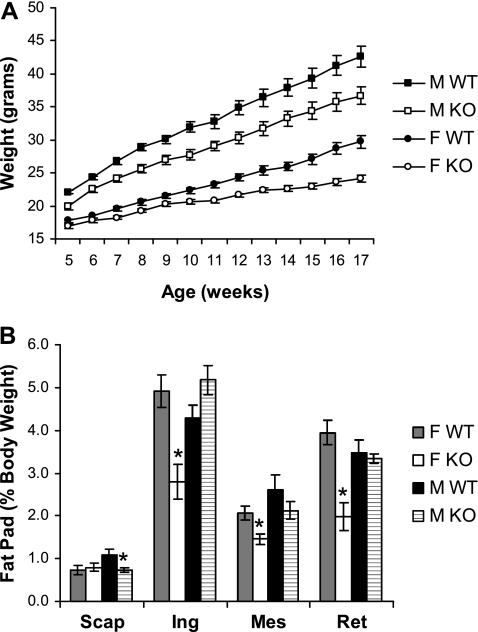Fig. 1.
Effect of a high-fat diet on body and fat pad weights of Gng3+/+ (WT) and Gng3−/− mice (KO). A: time course of body weight gain in age-matched WT and KO mice fed high-fat chow from week 5 through week 17 of age. Both female (open circles, n = 10) and male KO mice (open squares, n = 14) weighed significantly less than female (solid circles, n = 17) and male WT mice (solid squares, n = 8), respectively. In a repeated-measures multivariate ANOVA, there was a significant effect of genotype for both females (F1,25 = 14.7, P = 0.0008) and males (F1,20 = 9.4, P = 0.006), and there was a trend toward an interaction between genotype and time for females (F12,14 = 2.3, P = 0.07). B: effect of the 12-wk high-fat diet on fat deposition in the brown adipose tissue of the interscapular (Scap) area and the white adipose tissue of the inguinal (Ing), mesenteric (Mes), and retroperitoneal (Ret) areas. Fat pad weight is expressed as a percentage of total body weight (% BW). Data are from the mice shown in A and killed at week 18. All three white adipose tissue fat pads from female KO mice weighed significantly less than those from female WT mice. *P < 0.01 for comparison to WT of the same sex by Student's t-test.

